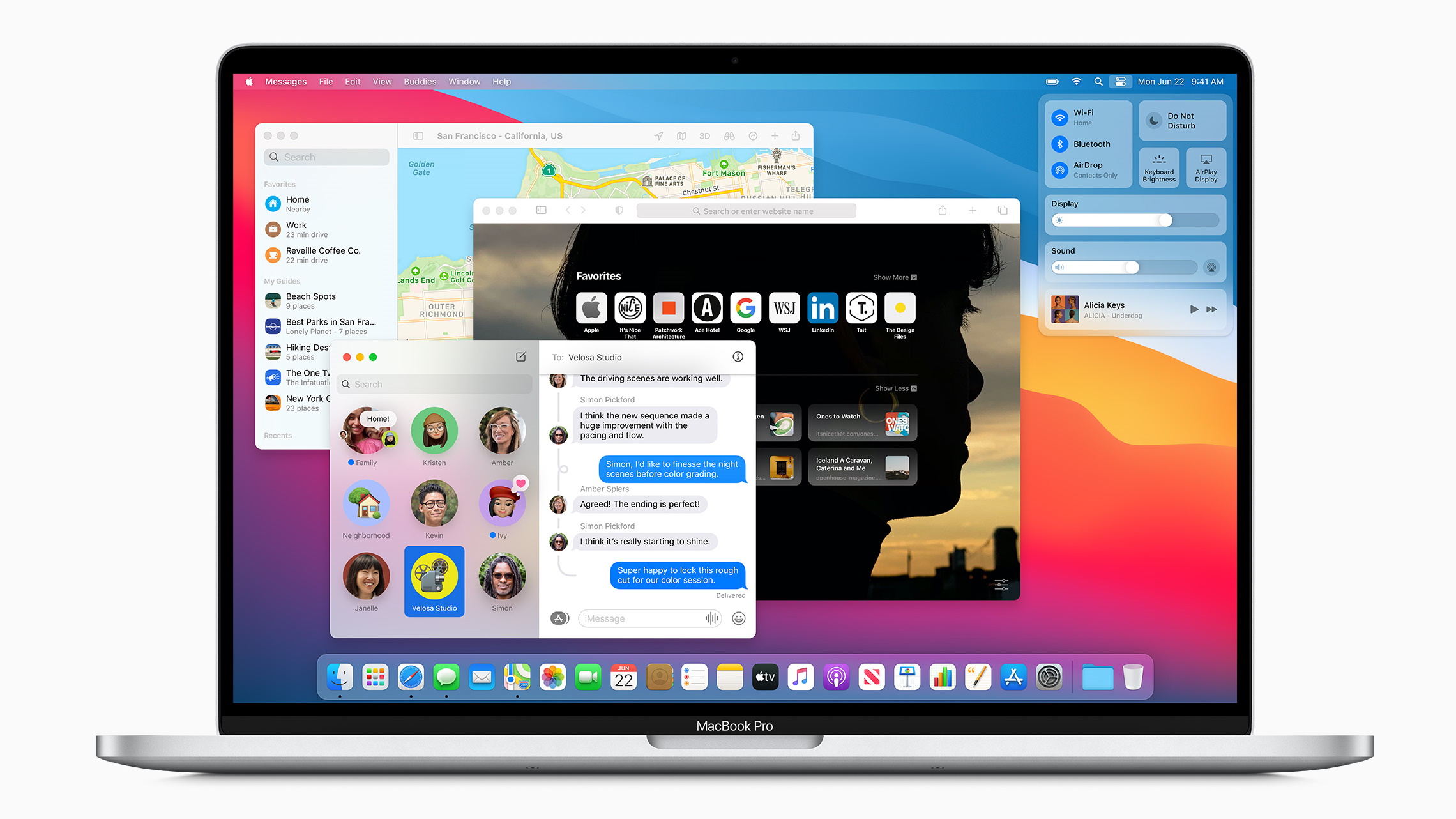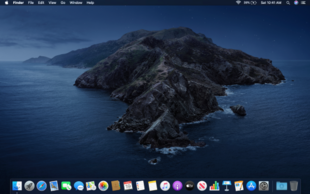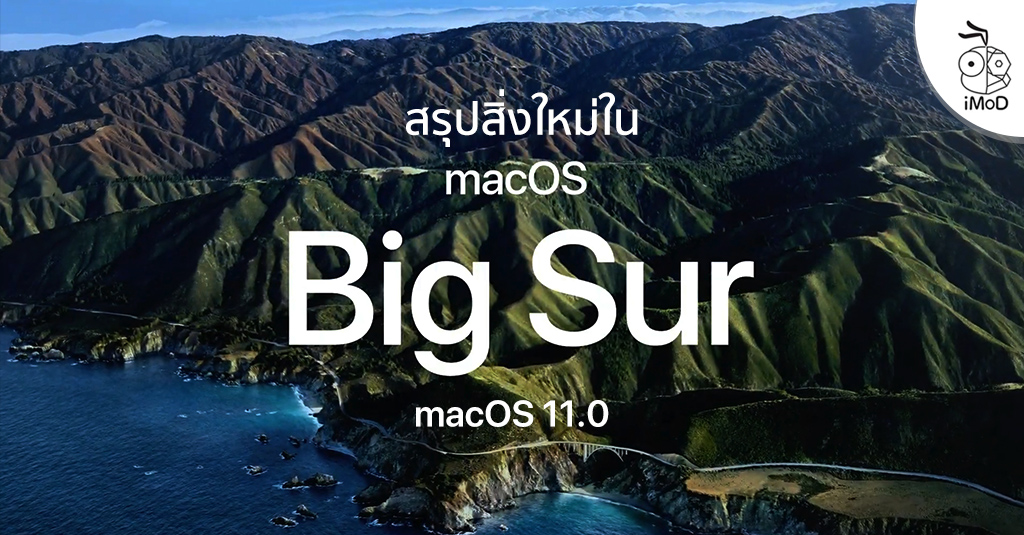macOS Catalina 10.15.7 Update is now Available!
Finally, after nearly 20 years, Apple has transitioned from macOS 10 (aka Mac OS X) to macOS 11. Which we will look at in more detail next. In this article. Intune lets you manage macOS devices to give users access to company email and apps. As an Intune admin, you can set up enrollment for company-owned macOS devices and personally owned macOS devices ('bring your own device' or BYOD).
For the first time since Mac OS X Snow Leopard, Apple has progressed past a .6 point release! I'm very happy with this change, as it's easier to understand dot releases compared to supplemental updates. This is the 21st update overall for macOS Catalina.
UPDATE! 9/29/20 – I just posted an article talking about the Catalina 10.15.7 Update accountsd process using 400%+ CPU.
UPDATE! 9/27/20 –A few reports are coming in that the 10.15.7 update is causing some problems with the accountsd process. After the installing the 10.15.7 update, accountsd runs up to 400% in Activity Monitor. The issue might happen for some users that are using iCloud for Drive, Mail or Cal. Other reports say the issue can happen if you are using internet accounts with Gmail. This issue causes system slowness until resolved. Most fixes say to log out of iCloud or Gmail then restart.
Let's take a look at the macos Catalina 10.15.7 update changes.
The macOS Catalina 10.15.7 Update includes the following fixes.
macOS Catalina 10.15.7 provides important security updates and bug fixes for your Mac.
- Resolves an issue where macOS would not automatically connect to Wi-Fi networks
- Fixes an issue that could prevent files syncing through iCloud Drive
- Addresses a graphic issue that may occur on iMac (Retina 5K, 27-inch, 2020) with Radeon Pro 5700 XT
Apple's Public Patch Notes / Release Notes Documentation
NOTE: Apple Documentation takes a little while to show up online after release. I will update when the new articles are made available.
For more detailed information about this update and previous updates, please visit: https://support.apple.com/kb/HT210642
Previous 10.15 Releases + Previous Patch Notes
- 21. 10.15.7 = (19H2) – Update – Sep 24th 2020
- 20. 10.15.6 = (19G2021) – Supplemental Update – Aug 12th 2020
- 19. 10.15.6 = (19G2006) – 2020 iMac Fork Re-Released – Aug 4th, 2020
- 18. 10.15.6 = (19G2005) – 2020 iMac Fork – Aug 4th, 2020
- 17. 10.15.6 = (19G73) – July 15th, 2020
- 16. 10.15.5 = (19F2200) – 16″ MBPro Update Fork – June 15th 2020
- 15. 10.15.5 = (19F2096) – 16″ MBPro Shipping Fork – June 15th 2020
- 14. 10.15.5 = (19F101) – Supplemental Update – June 1st, 2020
- 13. 10.15.5 = (19F96) – May 26, 2020
- 12. 10.15.4 = (19E2269) – 13″MBPro Shipping Fork – May 6th 2020
- 11. 10.15.4 = (19E287) – Supplemental Update – April 8th, 2020
- 10. 10.15.4 = (19E266) – March 24th 2020
- 9. 10.15.3 = (19D2064) – MBAir Shipping Fork March 23rd 2020
- 8. 10.15.3 = (19D76) – January 28th 2020
- 7. 10.15.2 = (19C57) – December 10th 2019
- 6. 10.15.1 = (19B2106) – 16″ MBPro Update Fork – November 13th 2019
- 5. 10.15.1 = (19B2093) – 16″ MBPro Shipping Fork – Nov 13th 2019
- 4. 10.15.1 = (19B88) – October 29th 2019
- 3. 10.15.0 = (19A603) – Supplemental Update Re-Released – Oct 21st 2019
- 2. 10.15.0 = (19A602) – Supplemental Update – October 15th 2019
- 1. 10.15.0 = (19A583) – October 7th 2019
macOS Catalina 10.15.7 Update Changes, Info & Download Links
Delta Update
The 'Delta' update is smaller in size because it only includes fixes for the previous point release only.
Download Link – support.apple.com/kb/DL2051
Size = 2.84 GB
Commander dmg. Product ID = 001-51032
Requirements = 10.15.6
Combo Update
The 'Combo' update is for all previous versions of Catalina.
Download Link – support.apple.com/kb/DL2052
Size = 4.78 GB

Product ID = 001-51037
Requirements = 10.15.0, 10.15.1, 10.15.2, 10.15.3, 10.15.4, 10.15.5 or 10.15.6
Full Installer.app
Link – Catalina 10.15.7 Mac App Store
Size = 8.75 GB Lucky orangesee why your visitors don't converter.
Product ID = 001-51042
Requirements – 10.15 Catalina Requirements
T2 BridgeOS Update
T2 BridgeOS remains the same version number but goes up to BuildVersion 6.
Size = 417.7 MB
Product ID = 001-51038
BridgeOS Update Version = 17.16.16610 = BuildVersion 6
Previous 10.15.6 Supplemental Update = 17.16.16610
Previous BridgeOS Update Version = 17.16.16065
Security Content of macOS Catalina 10.15.7 Update.
This document lists security updates for Apple software.
MacOS Catalina 10.15.7 & Security Updates 2020-005
The following security fixes are included in Catalina 10.15.7.
Model I/O
Available for: macOS High Sierra 10.13.6, macOS Mojave 10.14.6, macOS Catalina 10.15
Impact: Processing a maliciously crafted USD file may lead to unexpected application termination or arbitrary code execution

Description: An out-of-bounds read was addressed with improved bounds checking.
CVE-2020-9973: Aleksandar Nikolic of Cisco Talos
Sandbox
Available for: macOS High Sierra 10.13.6, macOS Mojave 10.14.6, macOS Catalina 10.15
Impact: A malicious application may be able to access restricted files
Description: A logic issue was addressed with improved restrictions.
CVE-2020-9968: Adam Chester(@xpn) of TrustedSec
What Is Next For Microsoft After Windows 10
Catalina 10.15.7 Update Changes
-->Intune lets you manage macOS devices to give users access to company email and apps.

As an Intune admin, you can set up enrollment for company-owned macOS devices and personally owned macOS devices ('bring your own device' or BYOD).
Prerequisites
Complete the following prerequisites before setting up macOS device enrollment:
- Make sure your device is eligible for Apple device enrollment.
- Assign user licenses in the Microsoft 365 admin center
User-owned macOS devices (BYOD)

You can let users enroll their own personal devices into Intune management. This is known as 'bring your own device' or BYOD. After you've completed the prerequisites and assigned user licenses, your users can enroll their devices by:

Product ID = 001-51037
Requirements = 10.15.0, 10.15.1, 10.15.2, 10.15.3, 10.15.4, 10.15.5 or 10.15.6
Full Installer.app
Link – Catalina 10.15.7 Mac App Store
Size = 8.75 GB Lucky orangesee why your visitors don't converter.
Product ID = 001-51042
Requirements – 10.15 Catalina Requirements
T2 BridgeOS Update
T2 BridgeOS remains the same version number but goes up to BuildVersion 6.
Size = 417.7 MB
Product ID = 001-51038
BridgeOS Update Version = 17.16.16610 = BuildVersion 6
Previous 10.15.6 Supplemental Update = 17.16.16610
Previous BridgeOS Update Version = 17.16.16065
Security Content of macOS Catalina 10.15.7 Update.
This document lists security updates for Apple software.
MacOS Catalina 10.15.7 & Security Updates 2020-005
The following security fixes are included in Catalina 10.15.7.
Model I/O
Available for: macOS High Sierra 10.13.6, macOS Mojave 10.14.6, macOS Catalina 10.15
Impact: Processing a maliciously crafted USD file may lead to unexpected application termination or arbitrary code execution
Description: An out-of-bounds read was addressed with improved bounds checking.
CVE-2020-9973: Aleksandar Nikolic of Cisco Talos
Sandbox
Available for: macOS High Sierra 10.13.6, macOS Mojave 10.14.6, macOS Catalina 10.15
Impact: A malicious application may be able to access restricted files
Description: A logic issue was addressed with improved restrictions.
CVE-2020-9968: Adam Chester(@xpn) of TrustedSec
What Is Next For Microsoft After Windows 10
Catalina 10.15.7 Update Changes
-->Intune lets you manage macOS devices to give users access to company email and apps.
As an Intune admin, you can set up enrollment for company-owned macOS devices and personally owned macOS devices ('bring your own device' or BYOD).
Prerequisites
Complete the following prerequisites before setting up macOS device enrollment:
- Make sure your device is eligible for Apple device enrollment.
- Assign user licenses in the Microsoft 365 admin center
User-owned macOS devices (BYOD)
You can let users enroll their own personal devices into Intune management. This is known as 'bring your own device' or BYOD. After you've completed the prerequisites and assigned user licenses, your users can enroll their devices by:
- Going to the Company Portal website or
- Downloading the Mac Company Portal app at aka.ms/EnrollMyMac.
You can also send your users a link to online enrollment steps: Enroll your macOS device in Intune.
For information about other end-user tasks, see these articles:
Company-owned macOS devices
For organizations that purchase devices for their users, Intune supports the following macOS company-owned device enrollment methods:
- Apple's Automated Device Enrollment (ADE): Organizations can purchase macOS devices through ADE. ADE lets you deploy an enrollment profile 'over the air' to bring devices into management.
- Device enrollment manager (DEM): You can use a DEM account to enroll up to 1,000 devices.
- Direct enrollment: Direct enrollment does not wipe the device.
Block macOS enrollment
By default, Intune lets macOS devices enroll. To block macOS devices from enrollment, see Set device type restrictions.
Enroll virtual macOS machines for testing
Note
macOS virtual machines are only supported for testing. You should not use macOS virtual machines as production devices for your end users.
What's Next For Macos X
You can enroll macOS virtual machines for testing using either Parallels Desktop or VMware Fusion.
For Parallels Desktop, you need to set the hardware type and the serial number for the virtual machines so that Intune can recognize them. Follow Parallels' instructions for setting hardware type and serial number to set up the necessary settings for testing. We recommend that you match the hardware type of the device running the virtual machines to the hardware type of the virtual machines that you're creating. You can find this hardware type in Apple menu > About this Mac > System Report > Model Identifier.
For VMware Fusion, you need to edit the .vmx file to set the virtual machine's hardware model and serial number. We recommend that you match the hardware type of the device running the virtual machines to the hardware type of the virtual machines that you're creating. You can find this hardware type in Apple menu > About this Mac > System Report > Model Identifier.
User Approved enrollment
User Approved MDM enrollment is a type of macOS enrollment that you can use to manage certain security-sensitive settings. For more information, see Apple's support documentation.
As of June 2020, all new macOS MDM enrollments in Intune, including those not done through Automated Device Enrollment (ADE), are considered user approved. The end-user must manually install the management profile in System Preferences > Profiles, and thus provide approval of the management profile. System Preferences is launched automatically from the Company Portal app for BYOD macOS users. Instructions to install the management profile are provided in the Company Portal app.
BYOD macOS MDM enrollments prior to June 2020 may not be user approved if the end-user did not manually provide approval of the management profile in System Preferences > Profiles. For BYOD enrollments after June 2020, the Company Portal app launches System Preferences for the user and the user will need to select Install. If the user did not approve the management profile during enrollment, the user can go to System Preferences > Profiles, choose the management profile, and select Approve to approve the profile at a later point in time.
Find out if a device is User Approved
- Sign in to the Microsoft Endpoint Manager admin center.
- Choose Devices > All devices> choose the device > Hardware.
- Check the User approved enrollment field.
Next steps
After macOS devices are enrolled, you can create custom settings for macOS devices.
